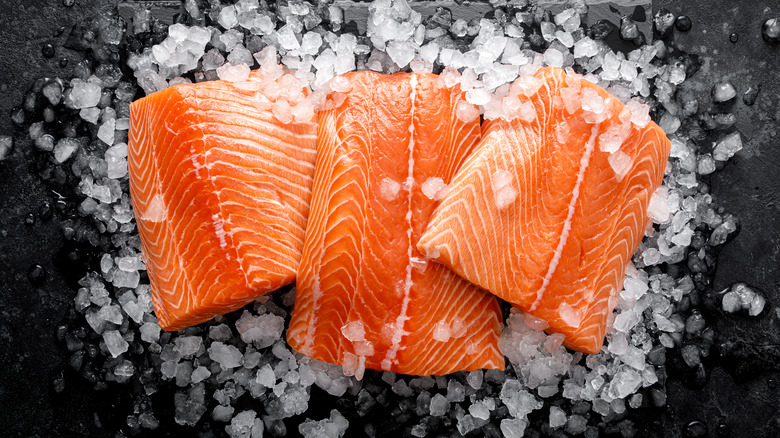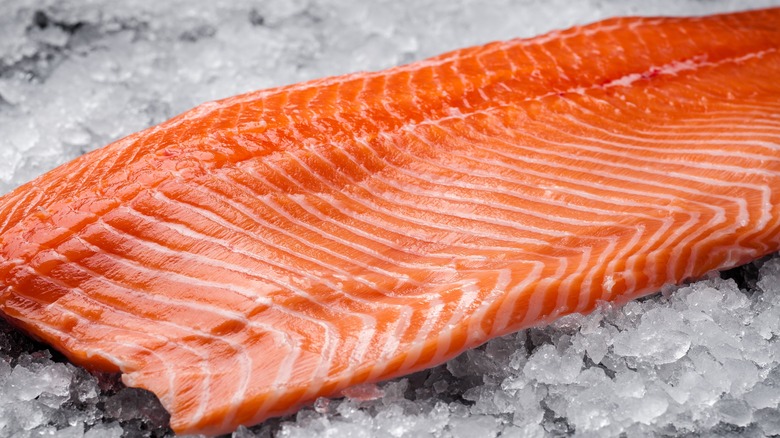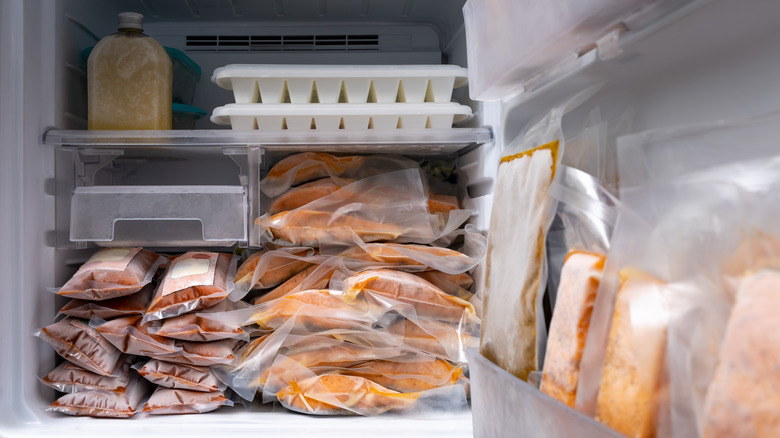How To Tell If Salmon Has Gone Bad
Do you know how to tell if salmon has gone bad? You may find yourself wondering if the delicious leftovers or beautiful filet of salmon you forgot about in the fridge are still safe to eat. Salmon is easy to access and versatile, but you must pay attention because seafood can spoil faster than other types of meat.
According to The New York Times, salmon's origin in the frigid ocean affects how the fish handles storage and ultimately how quickly it can spoil. The bacteria native to chilly water that may hitch a ride on your salmon are not deterred by the refrigerator — unlike the bacteria found in beef, pork, and poultry. Luckily, it's easy to tell if salmon has gone bad. Proper attention to detail and carefully storing your salmon before and after cooking will lessen the risk of any food-borne illness and keep your meals tasting their best.
Appearance and smell
The first thing you likely notice when you open the package is the smell. Does that filet smell fresh or does opening the package transport you to the fishing docks? If you feel like it smells too fishy, that could actually be a bad sign. Generally, salmon should not have a strong smell whether it's raw or cooked. The smell should be minimal. If you notice anything strong. fishy, or rancid, it's best to throw it out (via Oshēn Salmon).
You can also tell if your salmon has gone bad by its appearance. Fresh salmon should have a bright pink or orange color. According to TIME, salmon can vary in color based on how they were raised and processed. Farm-raised salmon tend to be light orange whereas wild salmon tend to be darker orange or almost red in comparison. Cook's Illustrated says that both of these variations are okay, as long as the salmon flesh and skin don't appear dull, and Oshēn Salmon emphasizes that the flesh should not be gray or have discolored spots. It's normal for salmon to have white fat strips throughout and these should also appear bright and not discolored.
If you have leftovers, or enjoy batch cooking or meal prep, how do you tell if your cooked salmon has gone bad? In cooked salmon, the rules are very similar. Cooked salmon should be light pink and opaque and the flesh should flake easily with a fork (via Bon Appetit).
Salmon storage and expiration dates
One of the most important things to check when buying salmon is the expiration date. This date should be listed on the package if purchased frozen. According to the U.S. Department of Agriculture, salmon generally keeps for up to four days in the fridge. Buying salmon that is not past the expiration date will help ensure that the fish is fresh and safe to eat.
The Mayo Clinic explains that eating food that is spoiled increases your chances of consuming food-borne bacteria that could result in gastrointestinal distress such as vomiting, stomach pain, and diarrhea. But even if your salmon is purchased before the expiration date, the way you store it before and after cooking is also very important to ensure its safety and freshness. Fresh salmon should be stored in the refrigerator and consumed within one to two days of purchase. Frozen salmon can last up to six months in the freezer when adequately packaged, but you may see a decline in taste and food quality after that point (via BluGlacier).
It's important to know how to check if your food is fresh and safe to eat. You will be easily able to tell if your salmon has gone bad using these freshness indicators and you can enjoy your leftovers worry-free.


